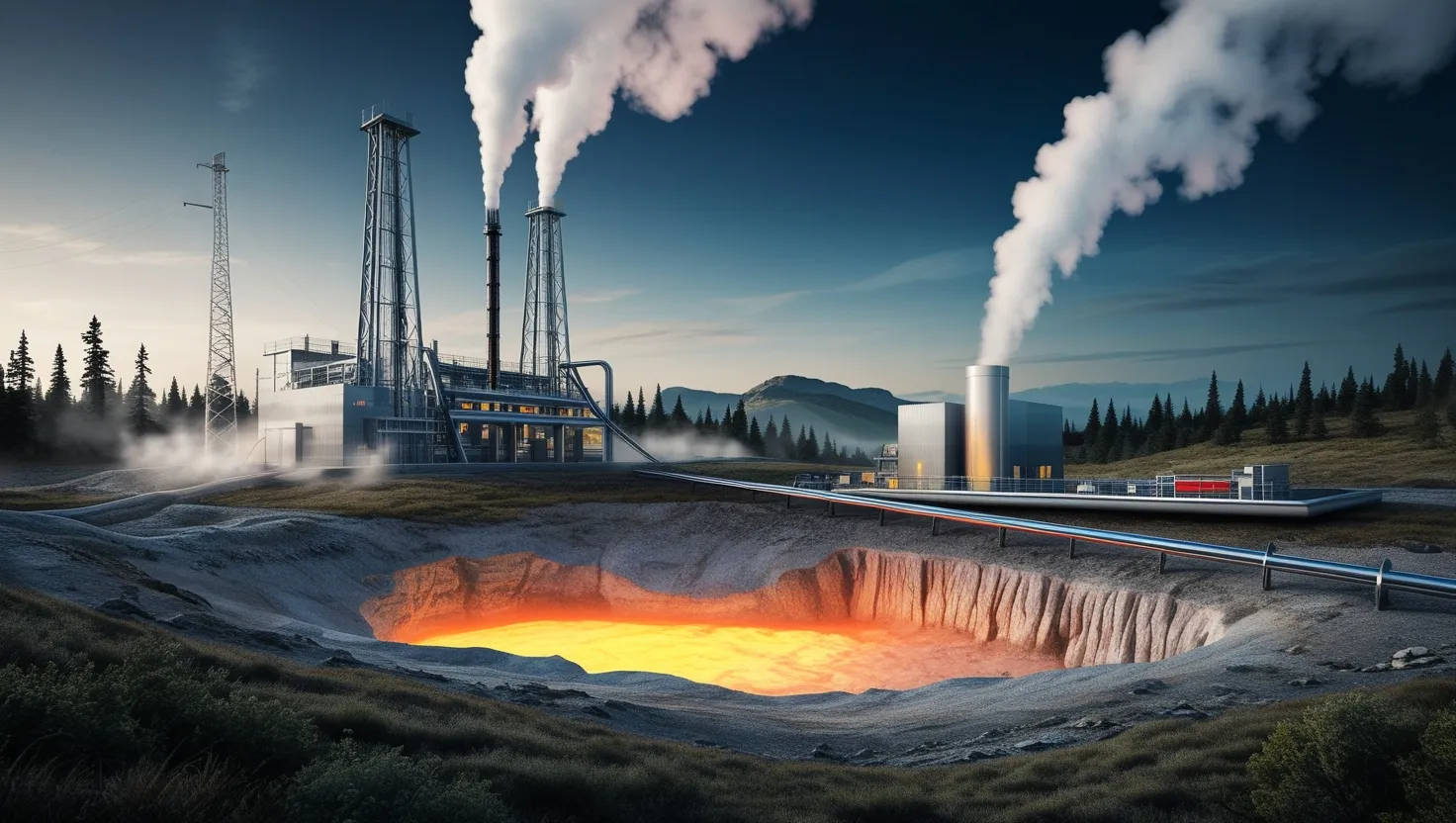Geothermal energy has long been the underappreciated sibling in the renewable energy family. While solar panels glisten on rooftops and wind turbines twirl majestically on hillsides, the Earth’s own heat has remained largely untapped. But that’s changing rapidly, thanks to a series of groundbreaking innovations that are transforming geothermal from a niche power source into a potential game-changer for clean energy.
Let’s start by diving into enhanced geothermal systems, or EGS. This technology is essentially giving Mother Nature a helping hand, creating artificial reservoirs where none existed before. By fracturing deep rock formations and injecting water, we’re able to generate steam and electricity in locations previously deemed unsuitable for geothermal power. It’s like we’re writing a new chapter in the Earth’s energy story, one where we’re no longer limited to natural hot springs and volcanic regions.
The implications of EGS are staggering. Imagine being able to tap into clean, constant power almost anywhere on the planet. It’s not just a pipe dream – companies like Fervo Energy are already proving the concept works. Their recent success in Nevada has sent ripples of excitement through the energy sector. Could this be the key to providing baseload renewable power that doesn’t depend on the whims of weather or daylight?
But EGS isn’t without its challenges. The process of fracturing rock formations has raised concerns about induced seismicity. Are we trading one environmental problem for another? It’s a valid question, and one that researchers are tackling head-on. The goal is to find that sweet spot where we can harness the Earth’s heat without shaking things up too much.
Moving on, let’s talk about closed-loop geothermal systems. These ingenious setups circulate specialized fluids through sealed underground pipes, eliminating many of the issues associated with traditional geothermal plants. No more worries about water consumption or earthquake risks. It’s a cleaner, safer approach that’s opening up new possibilities for geothermal energy.
Think about it – with closed-loop systems, we could potentially install geothermal power plants in urban areas or sensitive ecosystems. The environmental footprint is minimal, and the energy output is constant. Isn’t it exciting to imagine a future where clean, renewable power is generated right beneath our feet, without disrupting the surface world?
Now, hold onto your hats, because we’re about to get really hot. Supercritical geothermal drilling is pushing the boundaries of what’s possible, reaching zones where temperatures exceed 400°C. At these extreme depths, water exists in a supercritical state – neither liquid nor gas, but something in between. The energy potential here is mind-boggling, with the possibility of increasing output tenfold compared to conventional geothermal wells.
“The deeper we go, the more energy we find. It’s like discovering a new world beneath our feet,” says Dr. Amanda Chen, a leading geothermal researcher.
Of course, drilling to these depths presents enormous technical challenges. The pressures and temperatures involved are extreme, pushing the limits of our current technology. But the potential rewards are equally extreme. Could supercritical geothermal be the key to unlocking vast new energy reserves?
Speaking of drilling, the innovations happening in this field are nothing short of revolutionary. We’re not just talking about bigger drills – we’re talking about completely new approaches to penetrating the Earth’s crust. Plasma, lasers, microwave systems – technologies that sound more at home in a sci-fi novel are now being applied to geothermal drilling.
These advanced drilling technologies are game-changers, allowing us to reach deeper, harder rock formations more efficiently than ever before. The result? Dramatically reduced drilling costs and access to geothermal resources that were once thought impossible to reach. It’s like we’re giving geothermal energy a turbo boost, accelerating its potential to compete with other energy sources.
But perhaps the most intriguing development in geothermal energy isn’t about power generation at all – at least, not directly. Direct lithium extraction from geothermal brines is turning heads in both the energy and technology sectors. Imagine geothermal plants that not only produce clean electricity but also harvest valuable battery materials at the same time. It’s a two-for-one deal that could transform the economics of geothermal energy.
The implications here are huge. As the world shifts towards electric vehicles and renewable energy storage, the demand for lithium is skyrocketing. By extracting this crucial material from geothermal brines, we’re creating a new, sustainable source that doesn’t rely on environmentally damaging mining practices. Could this be the key to making geothermal energy not just clean, but highly profitable as well?
“We’re not just generating power anymore – we’re mining the future of clean technology,” remarks Sarah Johnson, CEO of a leading geothermal startup.
As we look at these remarkable breakthroughs, it’s clear that geothermal energy is on the cusp of a renaissance. The technologies we’ve discussed are pushing the boundaries of what’s possible, opening up new frontiers for clean, constant power generation. But it’s not just about the technology – it’s about reimagining our relationship with the Earth’s energy.
For too long, we’ve treated the planet as a resource to be exploited. But these geothermal innovations suggest a different approach – one where we work in harmony with the Earth’s natural processes to generate the power we need. It’s a more sustainable, more respectful way of meeting our energy needs.
Of course, challenges remain. The upfront costs of geothermal projects are still high, and there are technical hurdles to overcome. But the potential benefits are enormous. Geothermal energy could provide the baseload power we need to transition away from fossil fuels, without the intermittency issues that plague other renewables.
So, what’s next for geothermal energy? As these technologies mature and costs come down, we’re likely to see a surge in geothermal projects around the world. Countries that have never considered geothermal as a viable option may suddenly find themselves sitting on a clean energy goldmine.
But perhaps the most exciting prospect is the combination of these technologies. Imagine a geothermal plant that uses EGS to access deep heat, advanced drilling techniques to reach it efficiently, closed-loop systems to generate power safely, and direct lithium extraction to produce valuable materials. It’s a holistic approach to energy production that could revolutionize the way we power our world.
As we stand on the brink of this geothermal revolution, it’s worth asking ourselves: Are we ready to tap into the Earth’s true potential? Are we prepared to rethink our energy systems from the ground up? The answers to these questions could shape the future of our planet and our civilization.
Geothermal energy may have been overlooked in the past, but these breakthroughs are ensuring it won’t be ignored any longer. As we face the urgent need to decarbonize our energy systems, the heat beneath our feet may prove to be our most valuable ally. The geothermal renaissance is here – and it’s heating up fast.






